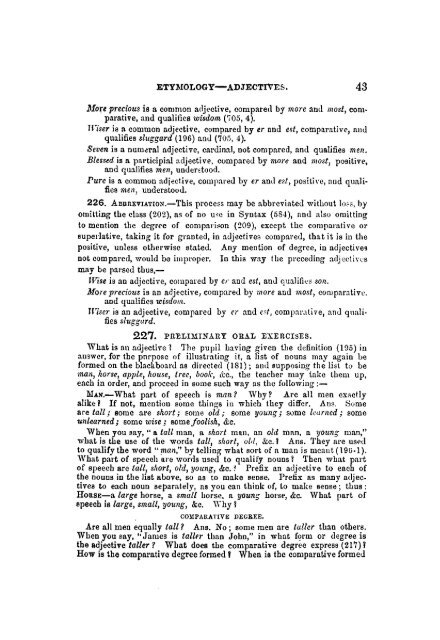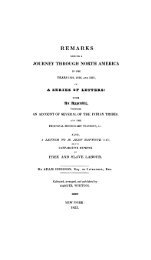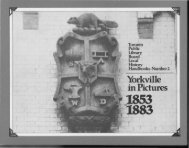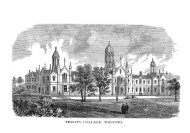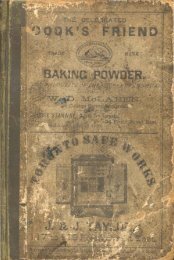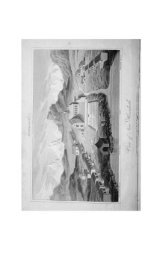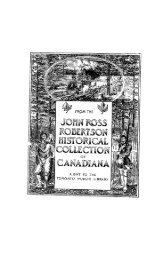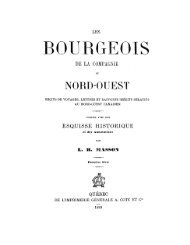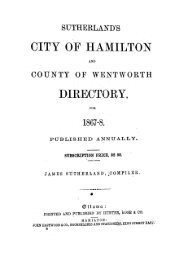alytical practical grammar - Toronto Public Library
alytical practical grammar - Toronto Public Library
alytical practical grammar - Toronto Public Library
Create successful ePaper yourself
Turn your PDF publications into a flip-book with our unique Google optimized e-Paper software.
ETYMOLOGY-AD.JECTI'VES • 43<br />
.lIfo~e precious is a common adjective, compared by more and most, com·<br />
parative, and qualifies wisdom (705, 4).<br />
n"iser is a common adjective. compared by er and est, comparative, and<br />
qualifies sluggard (196) and (705, 4).<br />
Seven is a nunural adjective, cardinal, not compared, and qualifies men.<br />
Blessed is 1\ participinl adjective, cumpared by more and most, positive,<br />
and qualifies men, undcntood.<br />
Pure is a common adjective, compared by er ant! est, positive, and quali·<br />
fies men, understood.<br />
226. ABUREVIATlON.-This process may be abbreviated without loss, by<br />
omitting the class (202), liS of no u~c in Syntax (5S4), and also omitting<br />
to mention the degree of comparison (209), except the comparative 01'<br />
superlative, taking it for granted, in adjectives compared, that it is in the<br />
positive, unless otherwise stated. Any mention of degree, in IIdjcctives<br />
not compared, would be improper. In this way the preceding adjectiYl's<br />
may be parsed thus,-<br />
IVise is an adjective, compared by eJ' and est, lind qualifies son.<br />
More precious is an adjective, compared by more and most, comparative.<br />
and qualifies wisdom.<br />
n"jsCl' is an adjective, compared by cr and cst, comprrrative, and quali·<br />
fies sluggard.<br />
227. PRELIMINARY ORAL EXERCISES.<br />
What is an adjective 1 The pupil having given the definition (H)5) in<br />
answer, for the pnrpose of illustrating it, a list of nouns rnay again be<br />
formed on the blackboard as directed (lSI); aIHI supposing the list to be<br />
man, horse, apple, house, tree, book, &c., the teacher may take them up,<br />
each in order, and proceed in some such way as the following :-<br />
MAN.-What part of speech is man? Why? Arc all men exactly<br />
alike I If not, mention some things in which they differ. AilS. Sume<br />
are tall; some are short; some old; some young; some learned; some<br />
unlearned; some wise; some foolish, &c.<br />
When you say, " a tall man, a short man, an old mrrn, II young man,"<br />
what is tbe use of tbe words tali, short, 0[,/, &c. i Ans. They are used<br />
to qualify the word" man," by telling what sort of a man is meant( 19(;.1).<br />
What part of speech Rl"e woros used to qualify nouns 1 Then what part<br />
of speech are tall, short, old, young, &c. ~ Prefix an adjective to each of<br />
the nouns in the list above, so as to make sense. Prefix as many adj ec·<br />
tives to each noun separately, as you can think of, to make sense; thus:<br />
HORSE-a large horse, a small horse. a young bOI'se, &c. What pllrt of<br />
speech is large, small, young, &c. ·Wby 1<br />
COMPARATIVE DEGREE.<br />
Are 1111 men equally lall? Ans. No; some men are taller than others.<br />
When you eay, "James is tall~r than John," in what fqrm or degree is<br />
the adjective taller? What does tbe comparative degree express (217) I<br />
Row is the comparative degree formed' When is the comparative formed


